Tomatoes are grown in almost every summer cottage. And if so, then many summer residents want to learn how to grow tomato seedlings on their own. Moreover, this matter is not at all as complicated as it might seem at first.
|
Summer residents often sow several different varieties of tomatoes. |
What kind of soil is needed for seedlings?
A lot depends on its quality.Therefore, it makes sense to prepare the soil yourself at home, rather than buy it in a store. Most often for tomato seedlings use the following mixture: you need to take turf soil (1 part), add humus (2 parts) and peat (3 parts).
You can dig up soil in the forest or in any other place overgrown with grass, where garden plants have not been grown for at least several years.
The container with soil is taken out into the cold for 3-4 days, and then brought indoors for the same time. After performing this operation several times, you will achieve the death of almost all pathogens and weed seeds. Purchased soil should also be frozen.
How to grow tomato seedlings at home
Preparing the seeds
Of the many schemes for preparing seeds for sowing, the following two schemes are preferable:
|
Soaking seeds before planting |
— Heat treatment of seeds at a temperature of 50 degrees for 25 minutes, followed by cooling in cold water. Then soak them for 18 hours in the Epin solution (2 drops of the drug per 100 ml of water) at room temperature.
— Treating the seeds in a 1% solution of potassium permanganate for 30–35 minutes. Then soak them for 18 hours in the Epin solution (2 drops of the drug in half a glass of water) at room temperature.
In this case, the sequence of operations must be exactly as indicated in the diagram.
When to sow
To determine the timing of sowing seeds, you need to know the date of planting tomato seedlings in a greenhouse or under a film cover. An average of 45–50 days should pass from the moment of germination; here we must add another 5–7 days for seed germination.
Thus, the age of seedlings before planting them in a permanent place will be 45–55 days for early ripening varieties; 55–60 days for mid-ripening varieties and about 70 days for tall hybrids and late-ripening varieties.
Planting older plants gives a negative result, because they stretch out, bloom later, and tolerate transplantation less well.
How to grow tomato seedlings
At home, tomato seedlings are most often grown in wooden boxes or plastic cups. Peat cups have not proven themselves very well. The roots of tomatoes emerge from them with great difficulty and most gardeners have abandoned them.
How to sow seeds
The prepared container is filled with the prepared mixture, poured over it with a hot solution of potassium permanganate or sodium humate. Then furrows are made in the soil every 3–4 cm, up to 1 cm deep, and lightly dried seeds are laid out in them after 1–2 cm.
|
The less frequently they are placed, the longer the seedlings can be kept in the seed box without fear of their thickening. |
It’s even easier to spread the seeds according to the same pattern directly on the soil surface, then sprinkle with the same mixture in a 1 cm layer. You should not water after sowing, because seeds along with water can be drawn deep into the soil.
Then the box is covered with film and placed in a warm place with a temperature of 25–28°C, preventing the soil from drying out. Relative humidity should be 80–90%.
|
In such conditions, shoots should appear in 5–7 days. |
It is more useful to grow tomato seedlings without picking, with transshipment. To do this, 2 seeds are sown in small cups, and later, with two leaves, they are transferred from a small cup to a large one, deepening to the cotyledon leaves.Such seedlings do not get sick and do not stop growing.
Conditions for growing healthy seedlings
Temperature
At home, it is not always possible to maintain the optimal temperature for growing seedlings. However, temperature is a very important factor, so you need to do everything possible.
Tomato seeds should germinate at 25 - 28 degrees. When seedlings appear, the boxes are transferred to a well-lit and cool place with an air temperature of +14...+16 °C. A week later, when the seedlings have become stronger, the daytime temperature is raised to +18...+20 °C, and at night it is maintained at +14...+16 °C (a decrease in temperature at night can be ensured by opening the window. But do this in such a way that there is no draft and wind did not blow on the young plants themselves).
Watering seedlings
Tomato seedlings need moderate watering with water at room temperature. Remember that tomatoes do not like excessive waterlogging. It is believed that seedlings should not be watered until the first true leaf appears, but you should keep an eye on the soil and if it is very dry, lightly sprinkle it with water.
Then watering should be no more than once a week, and only when 5 true leaves appear can you water more often - once every 3-4 days.
Backlight
At home, tomato seedlings are grown on windowsills. If the boxes are on the windows on the south side, then lighting is not needed in most cases.
|
Lighting for young seedlings |
But if the windows face north and you want to grow early tomatoes, then you need to take care of additional lighting.
Top dressing
The very first feeding is done during the formation of 2-3 true leaves. There is no point in doing this before.The first feeding of tomato seedlings should be filled with nitrogen so that the green mass of the plant grows well, but it is very important not to overdo it. To feed, take 1 tablespoon of urea and dilute it in 10 liters of water. The plants are watered with this solution.
The next (second) feeding is done 7 days after the first. It is best to use nitrophoska mineral fertilizer. To make a watering solution you will need 1 tablespoon of nitrophoska, which is mixed in 1 liter of water. This solution can water 25-30 plants.
Subsequent feeding is recommended every 10-12 days. According to the recipe for the second feeding.
Picking seedlings
The tool for picking is a pointed stick (spade) 10 cm long and 1 cm in diameter. Picking technique: use a pick to make a depression in the ground in the center, then, holding the leaves of the seedling with your fingers (do not grab the stem!), dig up the seedling and transfer it to the pot , lower the root into the hole, carefully tucking it with a lance.
|
In order for the root system to branch better, pinch the main root to a third of its length. |
The depth of planting of seedlings is limited to a level slightly below the cotyledon leaves. Sometimes, with very elongated, pale seedlings, they are buried to the level of the first true leaf.
After placing the seedling in the hole, use the tip of the peak to sprinkle the soil around it and lightly compact it. Water immediately, holding the plant by the leaves. If holes form in the soil, they are eliminated by adding dry soil mixture.
Why do tomato seedlings stretch out?
|
Seedlings stretch out in poor light and high temperatures. |
Seedlings stretch for two reasons:
- The room is too hot.
- Tomatoes stretch out in poor lighting.
Why did the leaves of the seedlings droop, the seedlings “died”
The reason is simple: the seedlings need to be watered urgently. After watering, tomatoes come to life literally before our eyes.
Mistakes when growing tomato seedlings
- Some are in a hurry to sow tomatoes as seedlings as early as possible. It is better to let the tomato seedlings be young and short than old, thin and almost a meter high. The optimal age of tomato seedlings, in my opinion, is 40-50 days. Also, if it is not possible to organize illumination of seedlings, you should not sow in February.
- Do not sow seeds in garden soil. The soil mixture prepared in the fall should be light and loose, consisting of equal parts of forest or compost soil, humus and sand, with half a liter of wood ash added to the mixture bucket.
- It is important not to allow the air temperature to drop before seedlings emerge. The most favorable temperature for crops covered with film or glass is 23-25 degrees Celsius. This ensures quick germination and helps to avoid damage to seedlings by blackleg. When growing tomato seedlings at home, this disease occurs very often!
- Try not to miss the moment of emergence. As soon as the first loops appear, immediately expose the containers with seedlings to light and lower the temperature. Otherwise, the seedlings will instantly stretch out!
- Do not overwater tomato seedlings. You should make it a rule to water only when the top layer of soil dries out. We must constantly remember that with excessive moisture, low air temperature and poor lighting, the threat is high blackleg disease, which can destroy crops in one night.
- The saying “In cramped conditions, no offense” is not for seedlings, because growing plants require more and more space.It is necessary to move the cups with tomato seedlings apart to such a distance that the leaves do not touch. You can even trim the tops of the lower leaves to improve lighting.
- It is important to prevent plants from overgrowing, because such seedlings (thin, long, pale, brittle) are unlikely to produce an early, high-quality, good harvest. But if such a mistake happens, and you find that the tomato seedlings are catastrophically overgrown, you can transplant them into large containers (say, 4-5 liter buckets).
It’s time to plant these seedlings in open ground
New varieties of tomatoes
F1 Leo Tolstoy - a new large-fruited hybrid for film greenhouses. Large, fleshy, with sugary and juicy pulp, like a watermelon, a hybrid for growing in open ground and greenhouses. The fruits are flat-round, red, five-six-chambered, weighing 250-300 g (up to 500 g at the first harvest). The plant is determinate (with limited growth), 120-130 cm high, begins to bear fruit in 115-120 days. The hybrid is resistant to major tomato diseases and cold-resistant.
F1 Three sisters is a new hybrid of the author’s selection that deserves close attention because of its unique taste. It is no secret that the most delicious tomatoes have less acids and more sugars in their pulp; they are fleshy, with a small number of seeds and delicate skin. The hybrid F1 Three Sisters has just such delicious fruits.
The hybrid ripens quite quickly: 110-150 days after sowing, large identical tomatoes weighing 180-200 g will appear on the table. The plants are determinate (with limited growth), 120-150 cm high, for growing in open ground (cola culture) or in greenhouses.
F1 Iris. High and stable yield is the main trump card of the new hybrid.Regardless of the weather conditions of the season, all summer you will have plenty of large fruits for pickling and salads. A mid-early hybrid, determinate (with limited growth), 100-130 cm high. Plants are convenient to grow in open ground* by tying powerful bushes to stakes, or in low greenhouses. The taste of the fruit will definitely not disappoint: rich, tomato-like, characteristic of varieties and hybrids for processing into juice and paste. The pulp is juicy, sweetish, with small seed chambers. Fruit weight 200-250 g.
F1 Star of Siberia Suitable for growing everywhere. It ripens quite quickly (110-115 days), and is guaranteed to bear fruit even in cold and damp summers. And under favorable conditions, the yield is simply amazing—up to a bucket of large, fleshy fruits, weighing 200 g per square meter. The plant is determinate (limited growth), 100-140 cm high. It is the medium-sized tomatoes that are good both for small greenhouses (they productively use the volume of the greenhouse and do not require complex care) and for open ground, but always with a garter to stakes. The pulp is sweet, very aromatic.
Ushakov-early ripening determinate variety. Recommended for cultivation in open ground and in film greenhouses. The fruits are ovoid, smooth, red, weighing 60-70 g. Ideal for pickling and whole-fruit canning, used for preparing fresh salads. The variety is resistant to verticillium and fusarium wilt.
Golitsyn - early ripening variety. The plant is determinate, from 80 to 120 cm, depending on the place of cultivation - in open ground or under film covers. The fruits are egg-shaped, red, dense, of high taste, weighing 70-90 g. Intended for fresh consumption, whole-fruit canning, pickling, processing.The variety is suitable for multiple harvests.
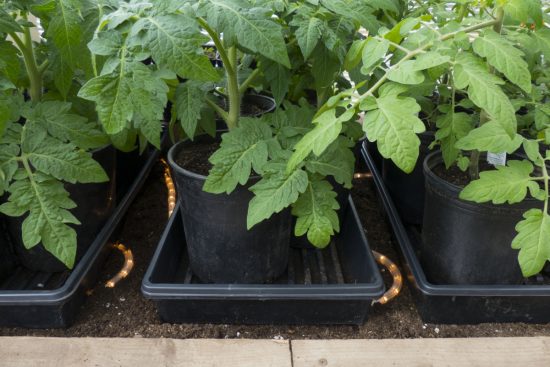
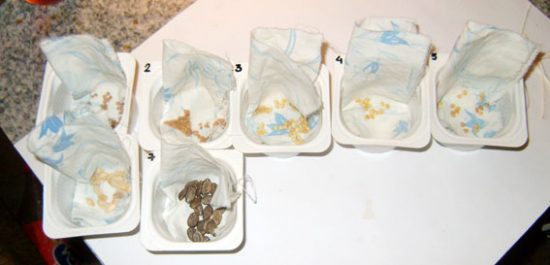
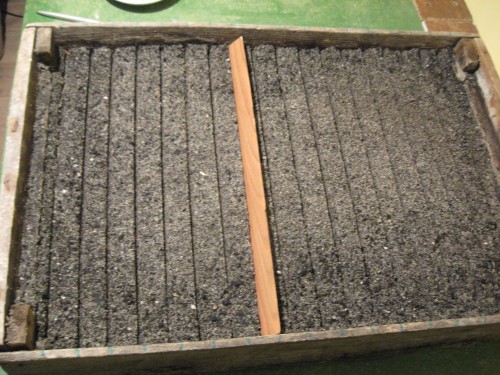
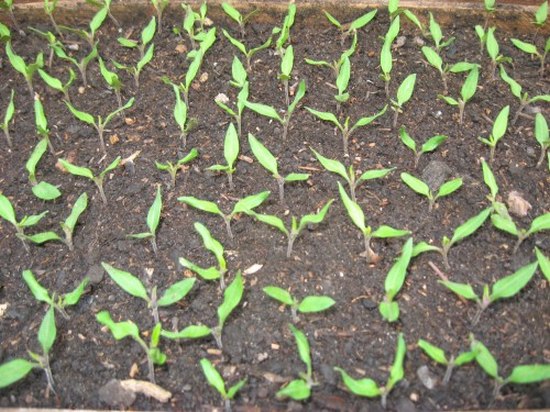
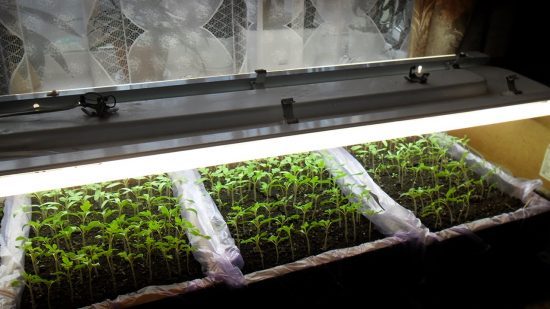
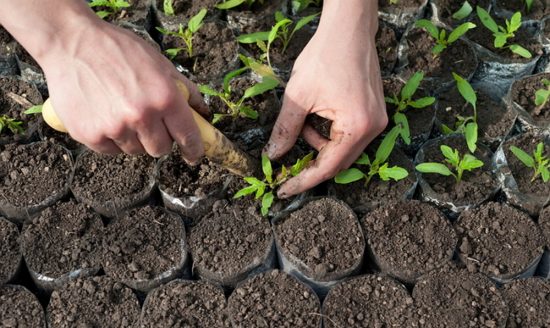
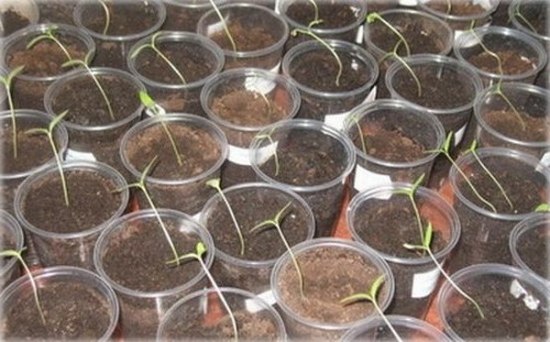
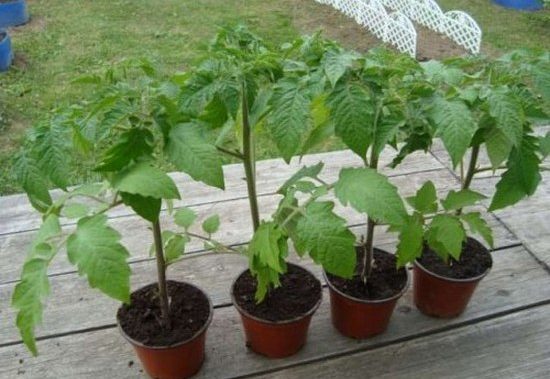

 (5 ratings, average: 4,00 out of 5)
(5 ratings, average: 4,00 out of 5) CUCUMBERS NEVER GET SICK, I'VE BEEN USING ONLY THIS FOR 40 YEARS! I SHARE A SECRET WITH YOU, CUCUMBERS ARE LIKE THE PICTURE!
CUCUMBERS NEVER GET SICK, I'VE BEEN USING ONLY THIS FOR 40 YEARS! I SHARE A SECRET WITH YOU, CUCUMBERS ARE LIKE THE PICTURE! You can dig a bucket of potatoes from each bush. Do you think these are fairy tales? Watch the video
You can dig a bucket of potatoes from each bush. Do you think these are fairy tales? Watch the video
 How our fellow gardeners work in Korea. There is a lot to learn and just fun to watch.
How our fellow gardeners work in Korea. There is a lot to learn and just fun to watch. Eye trainer. The author claims that with daily viewing, vision is restored. They don't charge money for views.
Eye trainer. The author claims that with daily viewing, vision is restored. They don't charge money for views. A 3-ingredient cake recipe in 30 minutes is better than Napoleon. Simple and very tasty.
A 3-ingredient cake recipe in 30 minutes is better than Napoleon. Simple and very tasty. Therapeutic exercises for cervical osteochondrosis. A complete set of exercises.
Therapeutic exercises for cervical osteochondrosis. A complete set of exercises. Which indoor plants match your zodiac sign?
Which indoor plants match your zodiac sign? What about them? Excursion to German dachas.
What about them? Excursion to German dachas.
My seedlings have grown tall. I heard somewhere that you can somehow stop growth, something like “pinch it.” Is it possible?
Unfortunately, I don’t know how to “pinch” tomato seedlings. There is a drug called Atlet, which slows down the growth of seedlings and prevents them from stretching. But reviews about it are not clear; some people complain that plant growth has slowed down not for a while, but for the whole summer. So you need to use Athlete carefully, strictly according to the instructions. I used this drug, but did not notice any special effect.
It's better to use simple, old rules. If tomato seedlings stretch out, place them in a bright, cool place. If it is in cups, move them apart so that there is no thickening, this is very important. Water less often, let the soil dry out and do not overuse nitrogen fertilizers. Well, plant very elongated seedlings lying down, they are well accepted and then grow well.